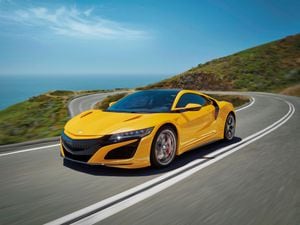Five classic car names that made a triumphant return
With the Lamborghini Countach name getting revived, we look at some other badges that made a comeback.

The big news in the automotive world this week is the shock return of the Lamborghini Countach. The slice of ‘70s supercar wedge is making a comeback and is expected to have an 800bhp hybrid engine.
It’s not the first time a car manufacturer has revived a classic nameplate. Here’s everything we know about the new Countach – and four other times the marketing department borrowed from the past to great success.
Lamborghini Countach

Yes, the original poster car is set to go back on sale – and it’s likely to be a hybrid. It will be a low volume, limited-edition vehicle and reports suggest its powertrain will be similar to the Sian’s, so you can expect a petrol-electric hybrid based around a V12 engine.
Details are thin on the ground, but those figures should give it a sub-three-second 0-60mph time and a top speed in excess of 200mph.
Toyota Supra

Anyone who grew up with the Fast and Furious franchise will have a soft spot for the Toyota Supra. Its chunky styling and highly tunable engine made it a big hit with car enthusiasts – particularly the fourth generation model sold between 1993 and 2002, when the model came off sale.
So when Toyota announced a sports car project in collaboration with BMW, it was no surprise to see it revive the Supra name. Some fans of the original didn’t like the BMW-influenced car bearing the iconic badge, but it has proved fairly popular.
The two-door coupe is available with a 2.0- or 3.0-litre petrol engine, with the latter making 330bhp.
Land Rover Defender

There are few more iconic car names than Defender, which adorns arguably the most capable off-road-focused production cars ever built. First introduced with this name in 1983, it could trace its roots back to the original ‘Series’ models that went on sale in 1948, receiving regular updates until 2016, when it was taken off sale having shifted over two million units.
In 2020 its successor finally arrived. With big shoes to fill, it has more than been up to the task, with cool styling, unrivalled off-road ability, and an interior that’s far more premium than its predecessor’s, too.
Honda NSX

Utter the NSX acronym around car enthusiasts and it’ll take seconds for someone to tell you ‘Senna developed the original!’ Yes, the first generation Honda NSX went on sale in 1990, and became well-loved for bringing supercar performance in a reliable, easy to drive package, honed by the F1 legend himself.
The video of Senna hustling the NSX around a race track while wearing loafers will forever be one of the coolest examples of driver skill uploaded to the Internet.
The latest version hasn’t earned quite the same iconic reputation, but it’s a fantastic performance car and arguably one of the most underrated supercars of the past couple of decades. Introduced in 2016, it has a petrol-electric hybrid powertrain and the kind of styling that could distract from any Ferrari or Lamborghini.
Ford Puma

On the slightly less exotic end of the scale, yet no less important, is the Ford Puma. This was a small, agile sports car, so it was no surprise when fans of the original were disappointed to see the name used on a supermini-based crossover.
Ford won’t care about that, though, as the Puma has been a huge success. The Fiesta was once the company’s best-seller, but the Puma regularly tops it in the sales charts now, bringing the Blue Oval’s domination to yet another market sector.





